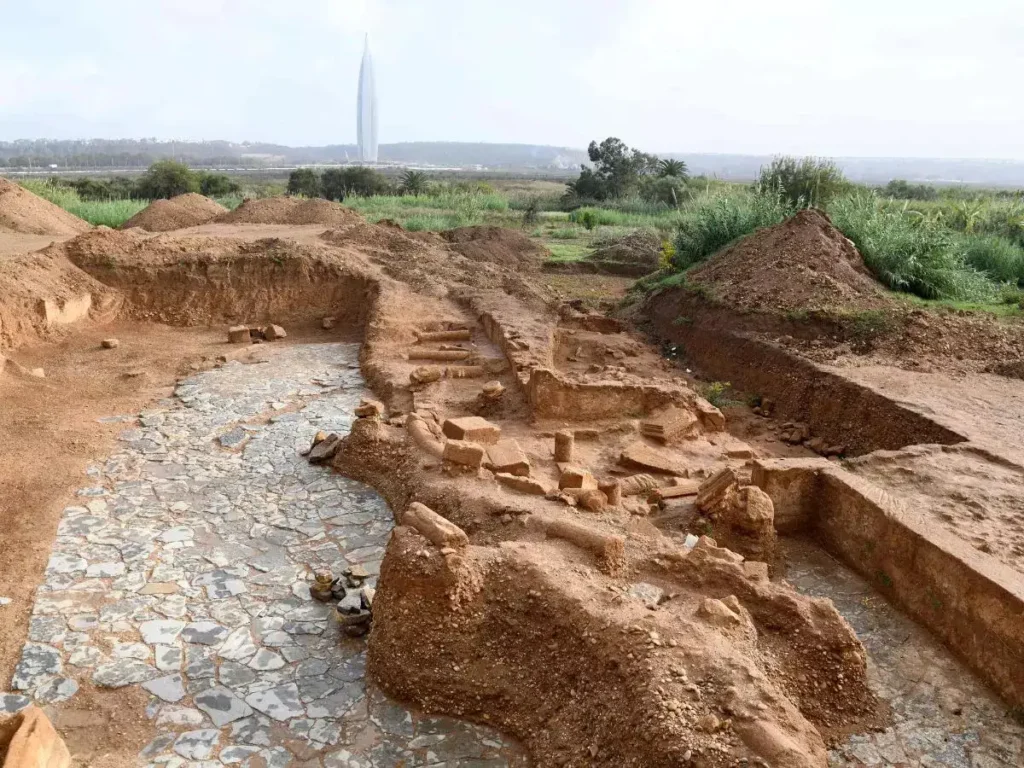
Morocco’s landscape, a tapestry of rugged mountains, sprawling deserts, and fertile plains, tells a story of geological wealth and human ambition. Beneath its surface lies a treasure trove of minerals—phosphates, silver, gold, and more—that have fueled the nation’s economy for centuries. But this wealth comes at a price. Mining, while a cornerstone of Morocco’s GDP, leaves scars on the land, water, and communities. As I wandered through the dusty streets of a small village near the Kettara mine last summer, the air thick with the scent of earth and industry, I couldn’t help but wonder: what does this mean for Morocco’s future? This blog post dives deep into the environmental impact of mining in Morocco, weaving together stories, research, and expert insights to uncover the challenges and solutions shaping the nation’s mining landscape.
Morocco’s Mining Legacy: A Double-Edged Sword
Morocco is a global titan in phosphate production, holding about 75% of the world’s reserves, making it the largest exporter of this critical resource for fertilizers. Beyond phosphates, the country mines copper, silver, gold, and barite, contributing roughly 10% to its GDP and 25% to exports. But this economic boon has a shadow side. Mining disrupts ecosystems, pollutes water sources, and displaces communities, often in Morocco’s most vulnerable regions. The abandoned Kettara mine, for instance, stands as a haunting reminder of what happens when profit outpaces environmental care—its acidic tailings still contaminate the soil decades after closure.
Walking through villages near mining sites, you see the toll firsthand: cracked earth, sparse vegetation, and locals who speak of water too tainted to drink. Yet, Morocco’s government and companies like OCP Group are pushing for sustainable practices, balancing economic growth with environmental stewardship. The question is, can they succeed?
The Environmental Toll: Breaking Down the Impacts
Mining’s footprint in Morocco is vast, affecting air, water, soil, and biodiversity. Let’s explore each dimension to understand the full scope.
Soil Degradation and Contamination
Mining strips away topsoil, leaving landscapes barren and prone to erosion. In regions like Marrakech, studies on sites like Draa Lasfar reveal heavy metal contamination—copper, lead, and zinc—leaching into agricultural soils, reducing fertility and threatening crops. A 2016 study found that soils near the Draa Lasfar mine had toxic levels of trace metals, impacting local farming communities. Imagine a farmer, hands calloused from years of tilling, watching his fields turn barren as mine tailings seep into the earth. This isn’t just a loss of land—it’s a loss of livelihood.
- Heavy Metal Pollution: Metals like cadmium and arsenic accumulate in soils, posing risks to plants and humans.
- Erosion: Open-pit mining removes vegetation, accelerating soil loss in Morocco’s semi-arid climate.
- Tailings Mismanagement: Abandoned mines, like Kettara, leave behind hazardous waste piles that continue to pollute.
Water Pollution: A Silent Crisis
Water is life, but in mining regions, it’s often a casualty. Acid mine drainage (AMD), a process where sulfide minerals react with water and air to create acidic runoff, is a major issue. A 2018 study on the Draa Sfar South mine showed that polymetallic residues contaminated the central Haouz aquifer, affecting groundwater quality. In Safi, where phosphate processing plants dump waste into the Atlantic, a 2006 study by Morocco’s National Fisheries Research Institute found high cadmium levels in shellfish, signaling broader aquatic ecosystem damage.
As I stood by a stream near Youssoufia, the water looked deceptively clear, but locals told me it was undrinkable. “We used to fish here,” one man said, pointing to the sluggish current. “Now, it’s poison.” This contamination doesn’t just harm ecosystems—it jeopardles social unrest, as communities lose access to clean water.
Air Quality and Health Risks
Mining generates dust and emissions that choke the air. In Safi, residents describe a persistent smog from phosphate plants, linked to respiratory issues like silicosis among miners. A 2015 article in The Guardian highlighted how workers in OCP’s Safi plant face health risks from toxic byproducts like phosphogypsum, often dumped without proper containment. The lack of transparent air quality data from Morocco’s Ministry of Environment only fuels distrust among locals, who feel their health is an afterthought.
Biodiversity Loss: A Fragile Ecosystem
Morocco’s diverse ecosystems, from the Atlas Mountains to coastal wetlands, are under siege. Mining clears habitats, fragments ecosystems, and drives species loss. A 2025 study on phosphate mine restoration noted that native species like Stipa capensis struggle to survive in degraded soils. The loss of vegetation exacerbates desertification, a growing threat in Morocco’s arid south. Picture a landscape once dotted with acacia trees and grazing antelope, now a barren expanse of rock and dust—this is the reality in many mining zones.
Social and Economic Ripple Effects
The environmental impacts of mining don’t exist in a vacuum; they ripple into social and economic spheres. In Imider, a village near a silver mine, protests erupted in 2011 over water contamination and job losses, highlighting the tension between economic gains and community well-being. A 2020 blog post from Bard College noted that mining often enriches corporations while leaving local communities—like Imider’s—grappling with poverty and pollution. Miners face hazardous conditions, with silicosis and other diseases common, yet companies rarely compensate for occupational illnesses.
The social cost is stark: displaced families, lost livelihoods, and fractured communities. Yet, mining employs over 40,000 people and supports rural economies, creating a complex balance. Morocco’s government has introduced incentives, like tax breaks for eco-friendly mining, but enforcement lags, leaving locals skeptical.
Comparison Table: Mining Impacts vs. Mitigation Efforts
| Aspect | Environmental Impact | Mitigation Efforts |
|---|---|---|
| Soil | Heavy metal contamination, erosion, fertility loss | Phytoremediation, topsoil management, organic amendments |
| Water | Acid mine drainage, heavy metal pollution | Tailings containment, water treatment plants, sustainable water management |
| Air | Dust, toxic emissions, respiratory health risks | Wind energy adoption, dust suppression systems, air quality monitoring |
| Biodiversity | Habitat destruction, species loss, desertification | Reforestation, native plant restoration, integrated land management |
| Social | Community displacement, health risks, job insecurity | CSR initiatives, community engagement, stricter labor and environmental regulations |
This table highlights the stark contrast between mining’s toll and the steps being taken to address it. While mitigation efforts are promising, their success depends on consistent implementation and community trust.
Sustainable Mining: Morocco’s Path Forward
Morocco isn’t standing still. The government and companies like OCP are investing in greener practices. The 2015 Mining Code mandates environmental impact assessments and mine closure plans, a step toward accountability. OCP has reduced water consumption and adopted solar energy at some sites, while Minexpert offers advanced environmental assessments to minimize ecological damage. But challenges remain: abandoned mines, lax enforcement, and community distrust hinder progress.
Innovations in Restoration
Phytoremediation, using plants to absorb heavy metals, is gaining traction. A 2025 Frontiers study highlighted species like Italian ryegrass and Hirschfeldia incana stabilizing soils at Mibladen. At Kettara, researchers are exploring microbial communities to aid revegetation, with 2020 studies showing bacteria like Bacillus enhancing plant growth in toxic soils. These innovations offer hope, but scaling them across Morocco’s 200 abandoned mines is a daunting task.
Corporate Social Responsibility (CSR)
OCP’s CSR initiatives, like community development programs in the Gantour Basin, aim to rebuild trust. A 2019 ScienceDirect study found these efforts often focus on short-term aid rather than long-term empowerment, leaving communities dependent on mines. True sustainability requires involving locals in planning, ensuring their voices shape the future.
Policy and Community Engagement
Morocco’s National Strategy for Mining Sector Development (2015-2020) pushes for diversification and sustainability, but artisanal mining—especially for barite—remains under-regulated. Engaging communities, as seen in the Imider protests, is crucial. Transparent data, accessible environmental reports, and fair labor practices can bridge the gap between industry and locals.
Voices from the Ground: A Personal Perspective
Last summer, I met Amina, a mother of three in a village near Youssoufia. Her family relies on a small farm, but mining runoff has made their soil less fertile. “We want jobs, but not at the cost of our land,” she told me, her eyes tracing the horizon where phosphate mounds loomed. Her story echoes across Morocco, where communities yearn for progress without sacrifice. Experts like Fadoua Brour, a Moroccan sustainability advocate, argue that integrating indigenous knowledge into restoration—using local plants and traditional practices—could heal both the land and its people.
FAQ: Addressing Common Questions
Q: How does phosphate mining specifically impact Morocco’s environment?
Phosphate mining, dominant in Morocco, causes soil erosion, water contamination from phosphogypsum, and biodiversity loss. It also contributes to eutrophication, where excess nutrients harm aquatic ecosystems.
Q: Are there successful examples of mine restoration in Morocco?
Yes, projects like phytoremediation at Mibladen and microbial restoration at Kettara show promise. Native plants and bacteria help stabilize soils and reduce heavy metal spread.
Q: What health risks do miners face?
Miners are exposed to dust and chemicals, leading to diseases like silicosis. Lack of protective gear and poor labeling of toxic substances exacerbate risks, as reported in Safi.
Q: How is Morocco addressing mining’s environmental impact?
The government mandates environmental assessments, while companies like OCP invest in renewable energy and water conservation. However, enforcement and community engagement need improvement.
Q: Can artisanal mining be sustainable?
Artisanal mining, like barite extraction, can be sustainable with better regulation, training, and technology. Formalizing cooperatives, as attempted in Jerada, is a step forward but faces challenges.
Conclusion: A Call for Balance
Morocco’s mining industry is a paradox—a driver of prosperity and a source of environmental and social strain. From the phosphate giants of Safi to the abandoned shafts of Kettara, the impacts are undeniable: polluted waters, degraded soils, and communities caught between economic hope and ecological loss. Yet, there’s a path forward. Innovations like phytoremediation, stronger regulations, and genuine community engagement offer a blueprint for sustainable mining. Morocco’s challenge is to scale these efforts, ensuring that the wealth beneath its soil doesn’t come at the expense of its people or planet.
As readers, we can advocate for change by supporting transparent policies, learning about sustainable practices, and amplifying the voices of communities like Imider. Next steps? Explore resources like IDRC’s work on mine restoration or engage with local NGOs pushing for environmental justice. Morocco’s story is still being written—let’s help it be one of balance and hope.
